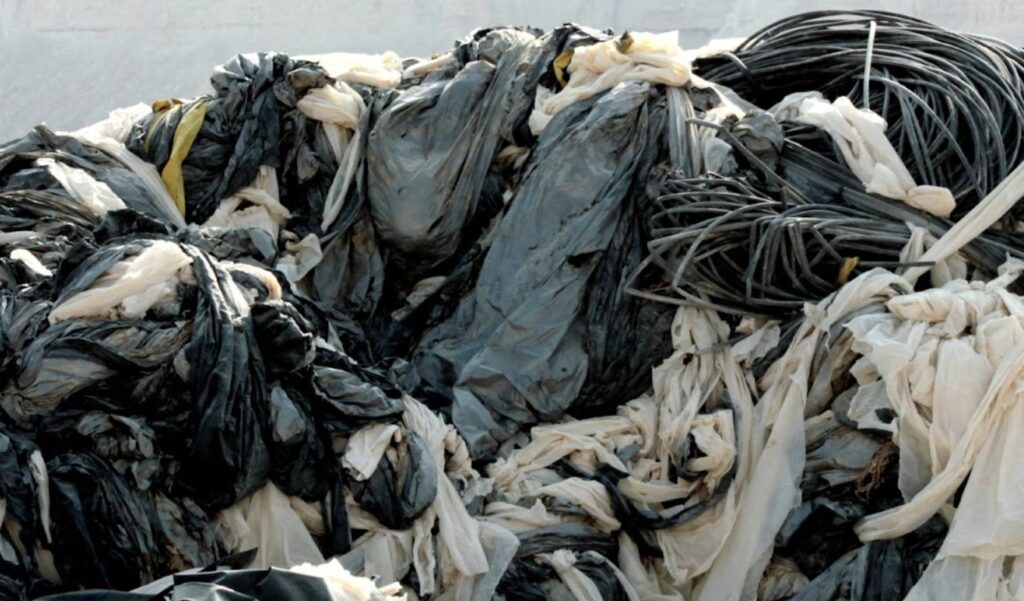Asbestos waste includes any asbestos-containing materials (ACMs) or debris from their removal or disturbance.
UK regulations treat asbestos as hazardous due to the health risks associated with its fibres, which can become airborne and, when inhaled, cause serious diseases like asbestosis, mesothelioma, or lung cancer.
Duty holders who mishandle asbestos waste—by improper packaging, storage, transport, or disposal—risk legal action, including enforcement notices, fines, and prosecution under the Control of Asbestos Regulations 2012 and environmental protection laws.
Classifying Asbestos Waste
When dealing with asbestos waste in the UK, it must be classified according to the 0.1% asbestos threshold set out in the Hazardous Waste Regulations 2005 (for England & Wales) and the Special Waste Regulations 2004 (for Scotland).

Asbestos waste exceeding this concentration is classified as hazardous (or “special”) and requires specific handling. Additionally, asbestos materials are categorised as either friable—which can easily release fibres (e.g., lagging and sprayed coatings)—or non-friable—more stable bonded materials, like cement sheets or vinyl tiles.
Packaging and Labelling Asbestos
Correct packaging and labelling of asbestos are essential to ensure safe handling and legal compliance. All asbestos waste must be double-bagged using a red inner bag and clear outer bag or placed in a UN-approved rigid container.
Bags should be strong enough to resist breakage, ideally rated for asbestos waste. Each package must display a durable label including a hazard pictogram, the words “Asbestos Waste”, the waste producer’s name and address, and the date of packaging.
On-Site Asbestos Storage and Handling
Asbestos waste must be stored in a specific and legally compliant manner by following the standards, which include:
- Secure containment – Store asbestos waste in sealed skips or containers that are clearly marked as hazardous and separated from general waste.
- Restricted access – Lock or cordon off storage areas to prevent unauthorised entry and potential disturbance of materials.
- Consistent classification – Treat all contaminated items—such as disposable PPE, tools, and asbestos-affected soil—as hazardous waste and store them under the same conditions.
- Prevent cross-contamination – Ensure waste is never mixed with other materials and that containment remains intact during handling and transfer.
Asbestos Transport and Documentation
Every shipment of asbestos must be accompanied by a Hazardous Waste Consignment Note. This document includes detailed information such as the waste code, producer, carrier, disposal site, and estimated quantities.
Each party—producer, carrier, and disposer—must sign and retain their copy. Transport must comply with Carriage of Dangerous Goods (CDG) regulations, requiring vehicles to be marked with hazard plates, drivers to have ADR-like training, and asbestos packaging to meet stricter UN standards.
Authorised Asbestos Disposal Facilities
Asbestos waste must be disposed of at UK landfill sites authorised to accept hazardous waste—either through a Waste Management Licence (WML) or a PPC permit.
Where a site has multiple cells, asbestos must be placed in dedicated hazardous waste cells. Intermediate facilities such as waste transfer stations (under SR2008 No 9) may store asbestos temporarily but must follow strict storage time and capacity limits, maintain site signage, and notify the Environment Agency of any non-compliance.
Duty-Holder Obligations and Record-Keeping Asbestos
Under CAR2012 Regulation 24 and the Environmental Protection Act 1990, duty holders have a duty of care throughout asbestos waste’s lifecycle—from origin to disposal. They must ensure packaging, transport, and disposal meet regulatory standards.

Certain documents must be retained for specific minimum periods, including:
- Consignment notes – Must be retained for a minimum of 3 years to document hazardous waste movements and legal compliance.
- Surveys, registers, and removal records – Legally required to be kept for at least 40 years, ensuring long-term traceability for duty holders and regulators.
- Digital storage systems – Recommended to manage retention schedules, improve access, and support audit trails for enforcement or property transactions.
- Regular reviews – Ensure that all records remain current, legible, and securely backed up in accordance with regulatory expectations.
Asbestos Enforcement and Penalties
Both the Environment Agency (EA) and Health and Safety Executive (HSE) have inspection powers and frequently find breaches such as missing labels, mixed waste, or unsealed asbestos packaging.
Typical enforcement actions include asbestos improvement or prohibition notices. Prosecution cases have resulted in penalties exceeding £50,000 for improper asbestos disposal and failure to provide consignment notes.
